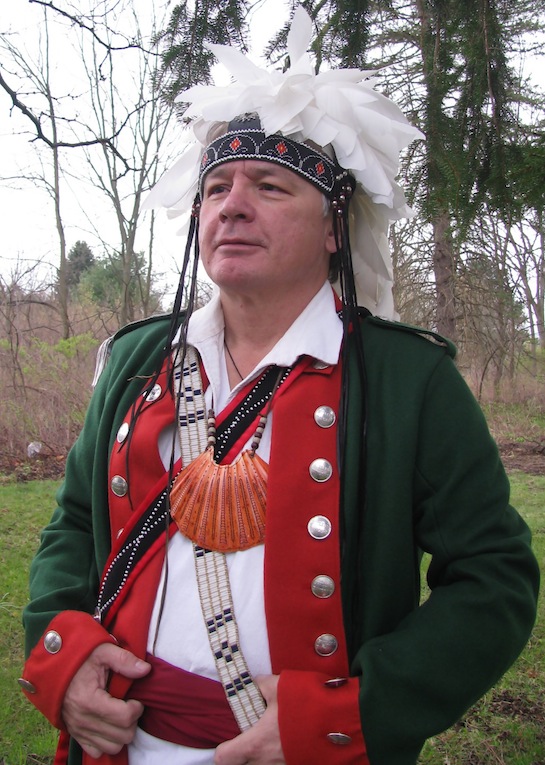Indianz.Com > News > Doug George-Kanentiio: How the Mohawks gave maple syrup to the world
How the Mohawks Invented Maple Syrup
Thursday, March 17, 2022
The Maple Tree (Wahta in Mohawk) is recognized by the Iroquois people as the representative of all trees.
When the people gather together for social, ceremonial or political sessions the Thanksgiving Address is recited in which different elements of creation are spoken to and asked to carry the gratitude of the people to their relatives. It begins with Mother Earth followed by the waters, insects, fish, food plants, medicine plants, trees, animals, birds, winds, rain, thunder, moon, sun, stars, teachers and spiritual leaders and ending with the creator-a feminine power.
Of particular importance are the maple trees as they are the first of the deciduous plants to awaken from their long winter’s sleep and alert the others that spring is on its way. When the Iroquois were new to this area, many generations ago, they were weakened by the long, cold months both in body and spirit. The Creator noticed this and was concerned so the maple was asked to give its life blood to replenish the strength of the human beings.

The Creator aroused the people and told them that the gift of syrup was not to be used in this way. They were told that they had other duties which must not be ignored. Thereafter they were to work for the syrup, that only sap would come from the trees and it would require them to find a way to make it into syrup. The Mohawks did so and invented ways to heat the sap and keep it at a near boil until the water evaporated into syrup and sugar. They were ashamed of their behavior and thereupon began a ceremony in which Wahta was given thanks for its great gift. This Maple Ceremony is the first of the Mohawk new year. It brings together the people so they may express their thanks to the Maple and then hold sacred dances in celebration. Maple sap mixed with the first fruit of the year, the strawberry, is the most important beverage of the Mohawks, our “national” drink. To this day inside of our longhouses the songs and rituals taught to our ancestors thousands of years ago are still set in motion as the world around us awakens to the call of our Wahta relatives. Our ancestors were good and generous people so, naturally, we decided to share this most delicious of foods with the world.Wahta, in #Ontario, comes from the Mohawk language and means “sugar maple.”
— Natural Resources (@NRCan) June 26, 2019
Discover many other Indigenous place names: https://t.co/EldmbZIC9F #IndigenousLanguages #GeoNames #CulturalPlaces #IYIL2019 pic.twitter.com/UEee46YD6t

Doug George-Kanentiio, Akwesasne Mohawk, is a residential school survivor. He was given the number 4-8-2-738. He serves as the vice-president of the Hiawatha Institute for Indigenous Knowledge. He previously served as a Trustee for the National Museum of the American Indian, is a former land claims negotiator for the Mohawk Nation and is the author of numerous books and articles about the Mohawk people. He may be reached via e-mail at: Kanentiio@aol.com or by calling 315-415-7288.
Note: Content © Doug George-Kanentiio
Search
Filed Under
Tags
More Headlines
Native America Calling: A sample of Native Guitars Tour 2024
Native America Calling: How Native literature is changing the mainstream narrative
Native America Calling: No ordinary animal
Native America Calling: Safeguards on Artificial Intelligence
NAFOA: 5 Things You Need to Know this Week
Chuck Hoskin: Cherokee Nation takes the lead for our environment
Native America Calling: Earth Day assessment for Native peoples
Cronkite News: Gathering addresses ‘epidemic’ among Native people
VIDEO: Cody Desautel on tribes and federal forest management
AUDIO: Legislative Hearing on Discussion Draft of Forest Management Bill
Native America Calling: Remembering the 1974 Navajo border town murders
Native America Calling: Can the right approach close the Native immunization gap?
Cronkite News: Long COVID cases remain high in Arizona
Native America Calling: Eyes in the sky for development, public safety, and recreation
Native America Calling: Three new films offer diverse views of Native life
More Headlines
Native America Calling: How Native literature is changing the mainstream narrative
Native America Calling: No ordinary animal
Native America Calling: Safeguards on Artificial Intelligence
NAFOA: 5 Things You Need to Know this Week
Chuck Hoskin: Cherokee Nation takes the lead for our environment
Native America Calling: Earth Day assessment for Native peoples
Cronkite News: Gathering addresses ‘epidemic’ among Native people
VIDEO: Cody Desautel on tribes and federal forest management
AUDIO: Legislative Hearing on Discussion Draft of Forest Management Bill
Native America Calling: Remembering the 1974 Navajo border town murders
Native America Calling: Can the right approach close the Native immunization gap?
Cronkite News: Long COVID cases remain high in Arizona
Native America Calling: Eyes in the sky for development, public safety, and recreation
Native America Calling: Three new films offer diverse views of Native life
More Headlines